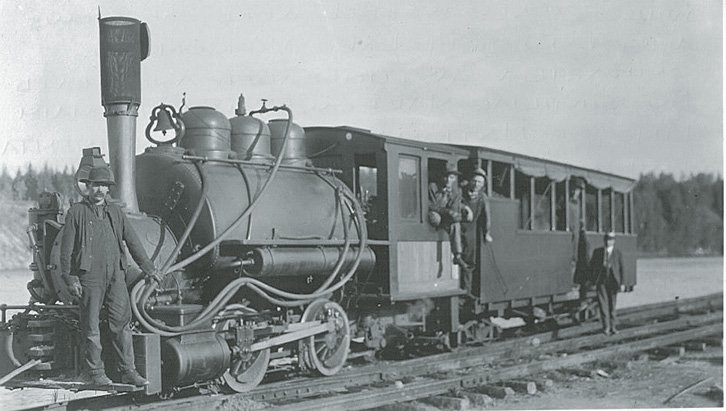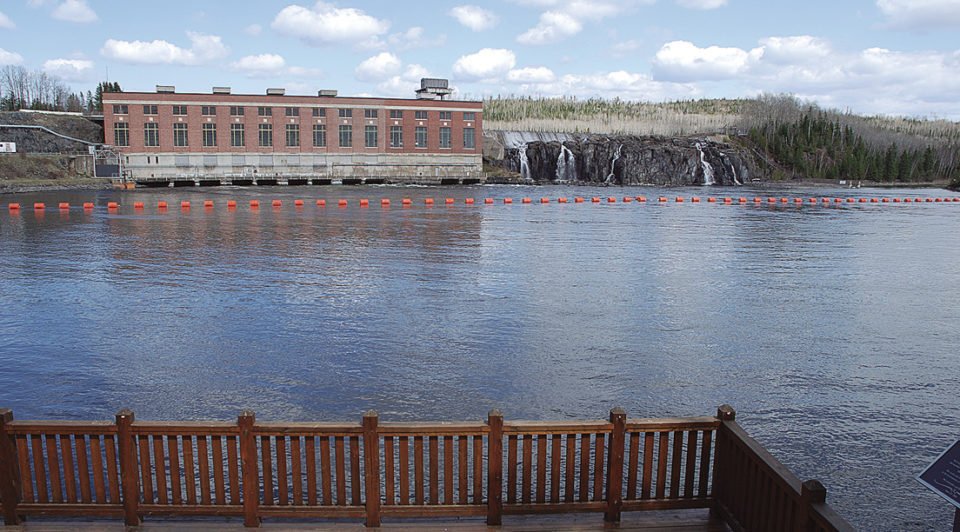Decades ago in the 1960s, while working for Ontario Hydro (OH), three of us—all aged under 20—took up the suggestion from other hydro staff to go weekend camping on the flat landing directly across the water from OH’s Alexander Falls Generating Station (built in 1930). Located about 10 miles north of Nipigon on Highway 585, the landing was touted as a beautiful, quiet place with great fishing.
None of us had ever camped before, but hey, it was a new adventure. So, after work on a Friday, we packed our camping gear, piled into my new ‘used’ 1957 red-and-white Chevy, and headed out to Alexander Landing.
Added to our confident attitude that we could do anything, we did have our own ‘security’ guards as it was in the days when the station was staffed 24-hours by regional operators who we all knew. The guys said they’d keep an eye out for our safety and even invited us over each morning for freshly-brewed coffee.
A few years ago, I returned to the landing at the now-automated Alexander GS, this time to visit the new viewing platform installed there. It was only then I learned from the signage about the historic Nipigon Tramway in operation from about 1908-1912 on the very grounds we had camped on years ago. The landing back in the early 1900s had been a busy hub of transportation activity with people, rail cars, tugs, scows, horses and warehouses.
When the tramway construction began around 1906, the Canadian Pacific Railway (CPR) had already been built across Canada with a route through the town of Nipigon. However, the federal government decided another transcontinental railway—the National Transcontinental Railway (NTR)—was needed on a northern route that would run 32 km (20 mi) north of Lake Nipigon.
“Transporting equipment and supplies into this remote region north of Lake Nipigon posed a big problem for contractors” wrote the late John Todd in his article, “Nipigon Tramway” in Canadian Rail, October 1977. He noted that while there were winter tote-roads with horse and dog teams hauling supplies north to the NTR construction site, the best transport in summer would be the Nipigon water route. But the big problem was “portaging the many rapids on the upper Nipigon River.”

Solution? The contractors developed a rail-water route to bypass the rapids by building a two-part narrow-gauge Nipigon Tramway. The lower section was built 5 km (3 mi) west of the Nipigon River through 30 km (18 mi) of bush from Alexander Landing to South Bay on Lake Nipigon south shore and the upper short 3-mile spur would run inland from Ombabika Bay on northern Lake Nipigon, along Little Jackfish River to the NTR construction site (now Ferland).
In 1906, to accommodate larger lake freighters to tie up alongside the wharf, a dredge deepened the channel into Nipigon Bay. By 1908, the tramway was operational when the big lake freighters arrived and unloaded rails and all supplies onto the rail cars, which would be put aboard scows equipped with three narrow-gauge tracks, each track holding three rail cars for a total of nine cars per scow.
The steamer tug Nipigon then pushed the rudimentary car-ferry scow for 19 km (12 mi) on a three-hour-trip up Lake Helen and Nipigon River to Alexander Landing.
At the landing, the cars were moved onto the Nipigon Tramway where a small wood-fired ‘donkey-engine’ (0-4-0 saddle tank) hauled the cars to South Bay on southern Lake Nipigon. Passengers were also transported on the tugs and travelled the tramway on a special closed-in car with longitudinal bench seats.
At South Bay, loaded cars were stored in warehouses awaiting the two steam tugs—double-decked 82-foot Ombabika and single deck 52-foot Pewabic. Horses moved the rail cars from the warehouses to scows to be pushed by the tugs the 112 km (70 mi) north across Lake Nipigon to Ombabika Bay. Once again, the cars rolled off the scow, put on tramway and hauled a couple of miles north to the construction site.
Later, the empty rail cars were loaded back on the scow, returned to South Bay, and taken by horses to the warehouse to be loaded again with cargo for another trip across Lake Nipigon.
After northern railway construction ended, the tramway rails were removed and the tugs Pewabic and Ombabika were pulled ashore on Lake Nipigon. They were put back in service in 1916 and 1917 for the lake’s commercial fishery industry. In 1923, the NTR became part of Canadian National Railway (CNR), which continues to operate today.
And the camping trip? Well, we had such a great time that we camped again the following summer at Alexander Landing, oblivious to its history.





